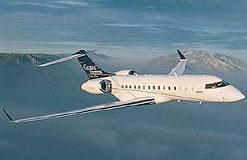Finding work as a corporate flight attendant can be an arduous process as, unlike the commercial carriers, most business jets do not require a flight attendant to work onboard an aircraft. Add to the mix that many operators do not opt to use flight attendants and the market tightens up even more. Still, there is work out there for those who aspire to fly on a private jet. Before heading down that road, many companies do require that you have some sort of corporate specific training before you can even apply for a job. Let’s take a brief look at various types of training programs available and what they have to offer.
Culinary Training
If you already have a culinary background, you have a leg up in this industry as the food customarily served to passengers on business jets is akin to the food served at five star restaurants. Still, it is important for the successful candidate to know how to order catering, how to accurately plate food, understand what exemplary food service is, know proper food handling and safety techniques, and have a strong background in wine service. Training companies such as Integrity Flight Crews, LLC, The Corporate School of Etiquette, Corporate Flight Attendant Training, and Corporate Flight Solutions can all be beneficial in teaching you food service techniques. Most of these types of classes are one to three days in length.
Basic Indoctrination
If you have never flown before or if you have never flown on a corporate jet, companies offering training geared toward working on a private jet have training programs in place. These programs usually include food service techniques, cabin safety training including security training, emergency evacuation, fire safety, first aid, and ditching. Some programs meet certain FAR requirements including those found under FARs 142, 135, and 91. Training companies such as Corporate Flight Solutions, Alteon Training, LLC, FACTs/AirCare, FlightSafety International, and Beyond and Above Corporate Flight Attendant Training all provide training geared toward helping people find work as a corporate flight attendant. Most of these types of classes last up to five days.
Specialized Training
While not a necessary part of flight attendant training, there are companies offering specialized training that goes beyond the training offered by the atypical corporate flight attendant training program. These programs include Jeff Hare Safety and Survival Systems, S.T.A.R.K., MedAire, as well as a few others. These types of classes are typically for one or two days.
Keep in mind, since the FARs do not specifically require a corporate flight attendant to be onboard an aircraft with less than twenty passenger seats, that no training that you take makes you a certified corporate flight attendant. There is no such designation recognized by the FAA. People take training to learn the skills necessary to work private jet cabins and galleys as well as to give them an edge when it comes to hiring. Most people who call themselves corporate flight attendants pay for their own training which can cost them upwards of $5000. There is no guarantee that you will find employment once you complete your training either.
Finally, not all programs are equal and not all programs offering “corporate flight attendant training” are programs that are recognized by the Federal Aviation Administration or by members of the National Business Aviation Association. Shop around and learn more about what business aviation is all about on reputable forums and web sites including the Corporate Flight Attendant Community [please click on the link in the resource box].
Matthew Keegan is the owner of a successful article writing, web design, and marketing business based in North Carolina, USA. He manages several sites including the Corporate Flight Attendant Community and the Aviation Employment Board. Please visit The Article Writer to review selections from his portfolio.
Article Source: http://ezinearticles.com

